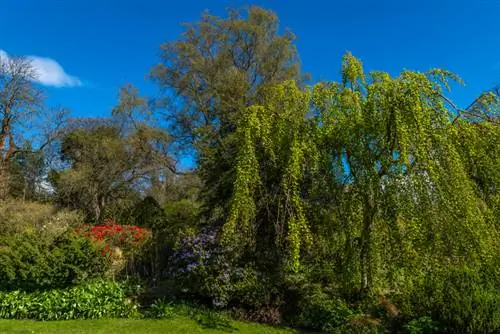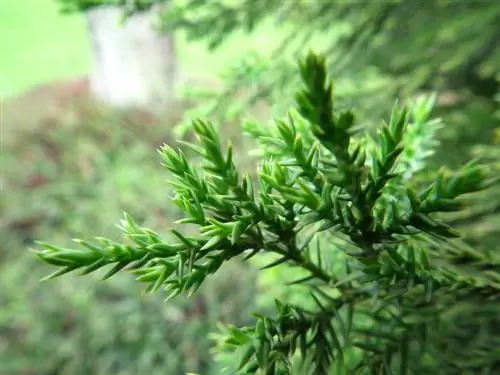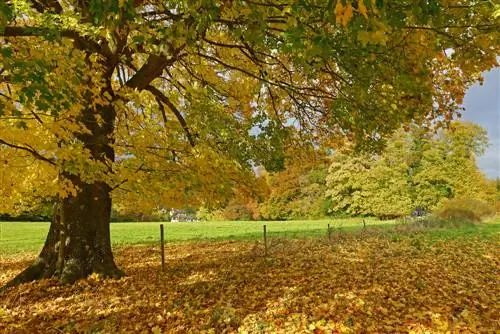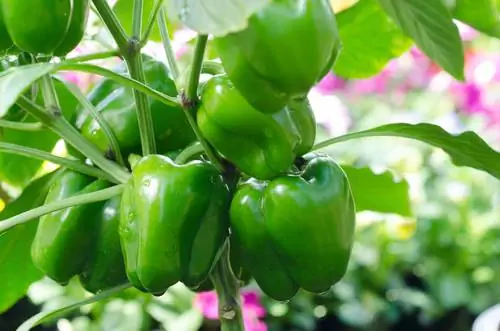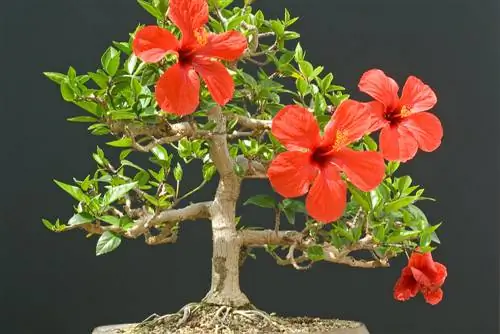- Author admin [email protected].
- Public 2023-12-16 16:46.
- Last modified 2025-01-23 11:20.
With a hanging elm you can create a cozy seating area or a natural arbor in your garden. Thanks to its gentle pruning tolerance, you can give the decorative, noble variety from the mountain elm family the desired shape. These instructions explain in practical terms what to pay attention to when making the cut.
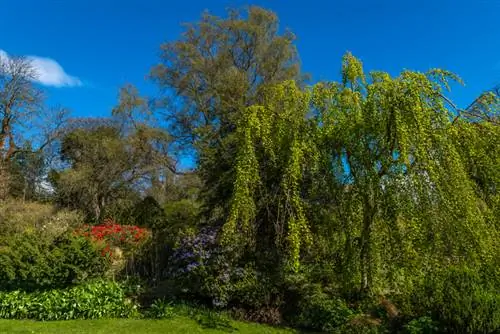
How do I prune a weeping elm correctly?
To properly prune a weeping elm, choose late winter (late January to early March) as the ideal time. Remove dead branches and shorten branches that are too long by up to two-thirds of their length. Watch out for wild shoots and remove them regularly.
The best time for cutting is in late winter
A weeping elm can easily cope with the pruning of its long branches if it does not have any foliage. Since the sap flow tends to zero at this time, the measure does not put the decorative tree under stress. Ideally, choose a frost-free day with overcast weather between the end of January and the beginning of March.
How to use pruning shears like a pro
A lovingly cared for hanging elm allows the branches to sprout in large numbers, forming a dense arbor. With annual growth of up to 50 cm, the vigorous Ulmus glabra quickly outgrows its dimensions, threatens to become bald from the inside and loses its decorative shape. You can effectively prevent this shortcoming with an annual cut. This is how it works:
- Cut off dead branches at the base so that the branch ring remains
- If necessary, shorten branches that are too long by up to two thirds of their length
- Make each cut a short distance from a leaf node
If you notice stunted or obviously frozen shoots, these will also be completely removed. When pruning, ensure that light and air reach all regions of the hanging head.
Remove wild shoots even during the year
A hanging elm is a graft. The decorative crown with the hanging branches is placed on a robust game base. Vertical branches can sprout from this base all year round and strive to overgrow the grafted part. Please keep an eye on these protruding wild shoots so that you can cut them off from the trunk as soon as possible.
Tip
Elms are very picky about soil conditions. To ensure that your hanging elm thrives vitally and he althily, please choose a location with nutrient-rich, calcareous, fresh, moist and well-drained soil. In these locations, the tree bravely stands up to the cunning elm bark beetle and does not fall victim to the widespread Dutch elm disease for which this pest is responsible.

